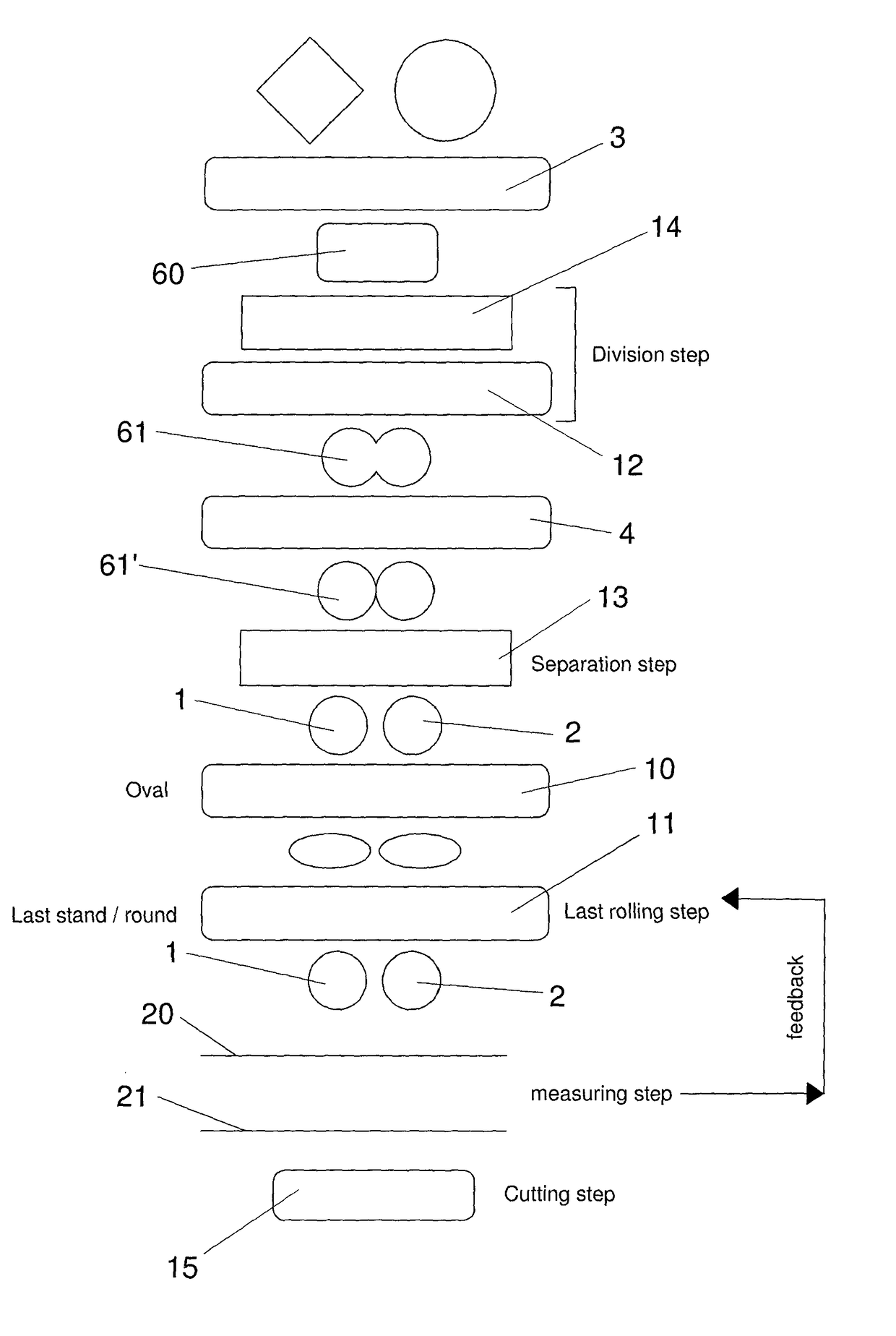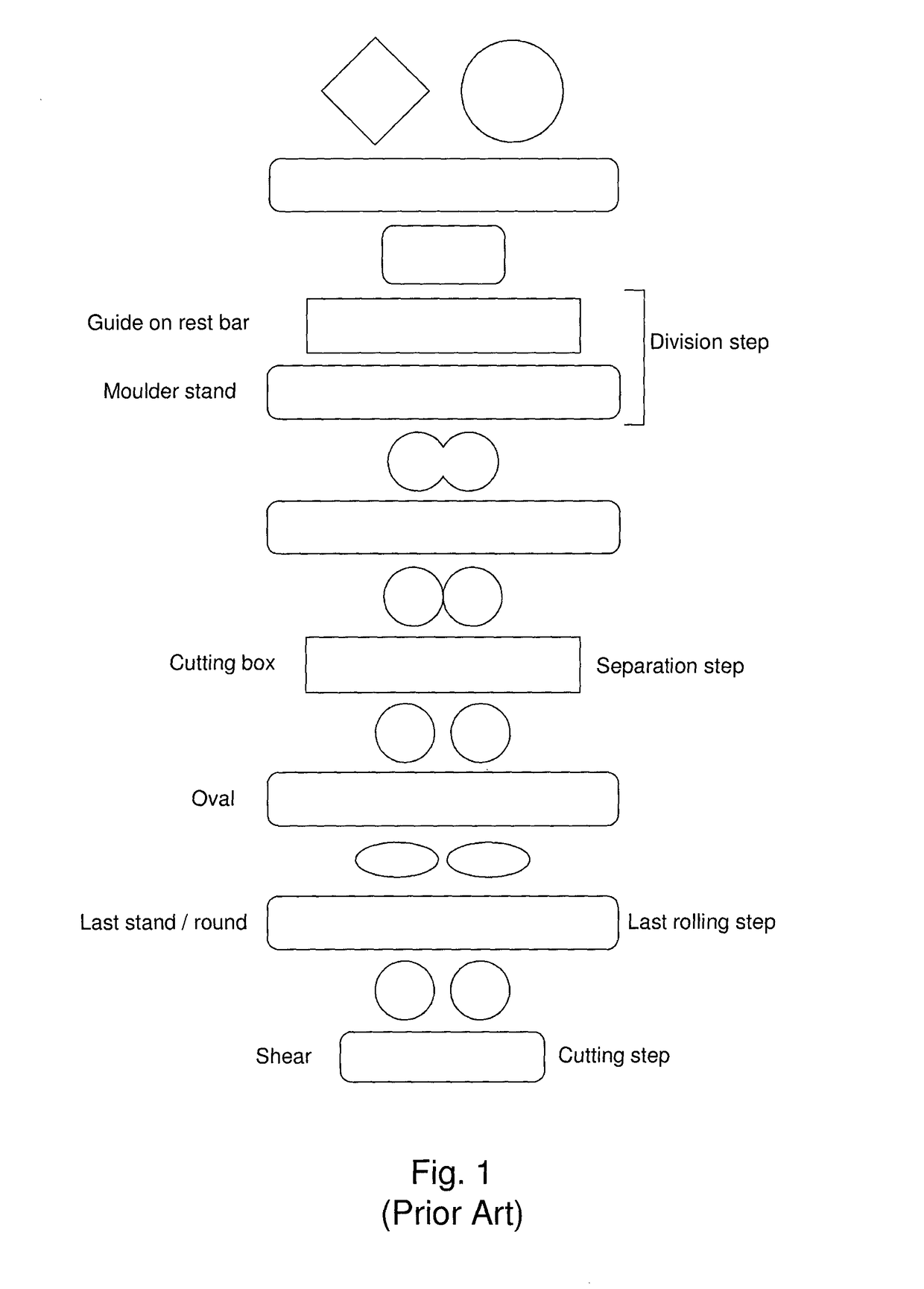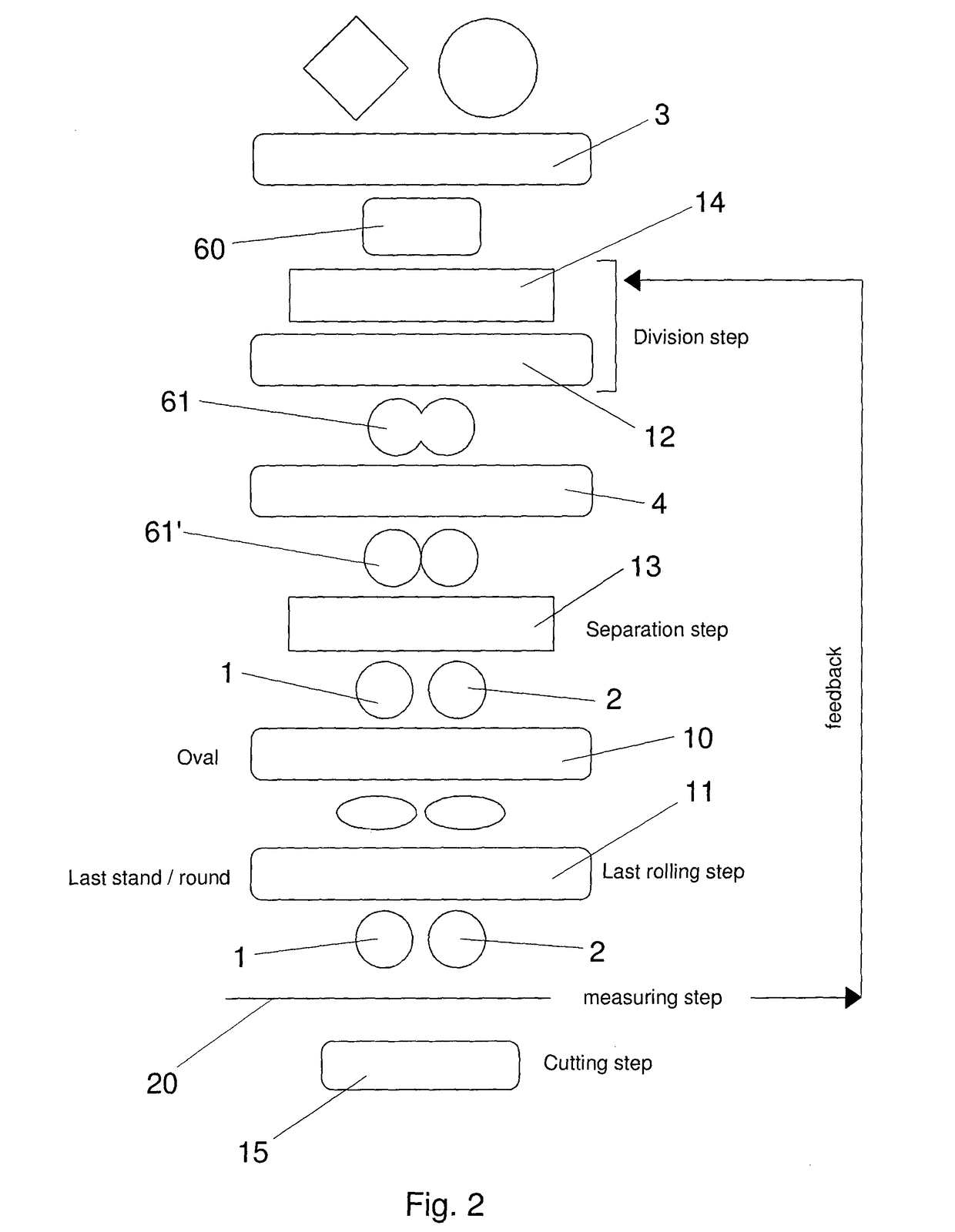Method for controlling a two continuous strands rolling plant
a technology of rolling mills and rolling mills, which is applied in the direction of rolling mill control devices, roll speed control devices, manufacturing tools, etc., can solve the problems of inconvenient control methods of discontinuous multi-strand rolling mills, the division of material into two, and the inability to control the continuous strand or bar production plant. , to achieve the effect of reducing the length difference, reducing the discarding, and increasing the production process performan
- Summary
- Abstract
- Description
- Claims
- Application Information
AI Technical Summary
Benefits of technology
Problems solved by technology
Method used
Image
Examples
first embodiment
[0051]For example, as depicted in FIG. 5, a pair of velocimeters can be used, arranged between the last rolling unit 11 and the cutting shear 15. In this case the process object of the invention is used in accordance with a first embodiment, of which FIG. 3 contains the related flow diagram, which provides the production of strands having identical section and the commercial length cut in cooling plate, downstream of shear 15. The control system starts with verifying the presence of the material, that is the strands 1 and 2, below the speed sensors or detectors (velocimeters), indicated with block 31. If there is material, the operation continues by taking the measurements, which in the case depicted, are the speeds V1 and V2, (block 32); if instead, there is no material below the sensors, the cycle resumes. Once the measurement has been taken by the velocimeter positioned between the last rolling unit 11 and shear 15 (block 32), the system performs a query relating to the entity of...
second embodiment
[0053]the invention, made by means of the sequence of rolling units shown inFIG. 4 and similar to the one of the rolling plant in FIG. 1, is suitable for plants in which a commercial length cut is applied directly on line immediately outside the rolling mill with the shear 15, and in which it is therefore fundamental to obtain bars in line of the same final length required by the market and with a section which instead may not be identical but must in any event remain within the tolerance required by the market, whereby the cutting lengths between the two strands 1 and 2 are to be made equal.
[0054]In this embodiment of the invention in which a detail is shown in FIG. 6, arranged immediately downstream of the last rolling unit 11 are sensors or detectors of the rolling speed V1, V2 of the strands 1, 2, both arranged before the cutting shear 15.
[0055]It is also provided that the last rolling unit 11 for the two strands 1, 2 consist of a finishing block consisting of two separate rolli...
PUM
| Property | Measurement | Unit |
|---|---|---|
| length | aaaaa | aaaaa |
| length | aaaaa | aaaaa |
| length | aaaaa | aaaaa |
Abstract
Description
Claims
Application Information
 Login to View More
Login to View More - R&D
- Intellectual Property
- Life Sciences
- Materials
- Tech Scout
- Unparalleled Data Quality
- Higher Quality Content
- 60% Fewer Hallucinations
Browse by: Latest US Patents, China's latest patents, Technical Efficacy Thesaurus, Application Domain, Technology Topic, Popular Technical Reports.
© 2025 PatSnap. All rights reserved.Legal|Privacy policy|Modern Slavery Act Transparency Statement|Sitemap|About US| Contact US: help@patsnap.com



